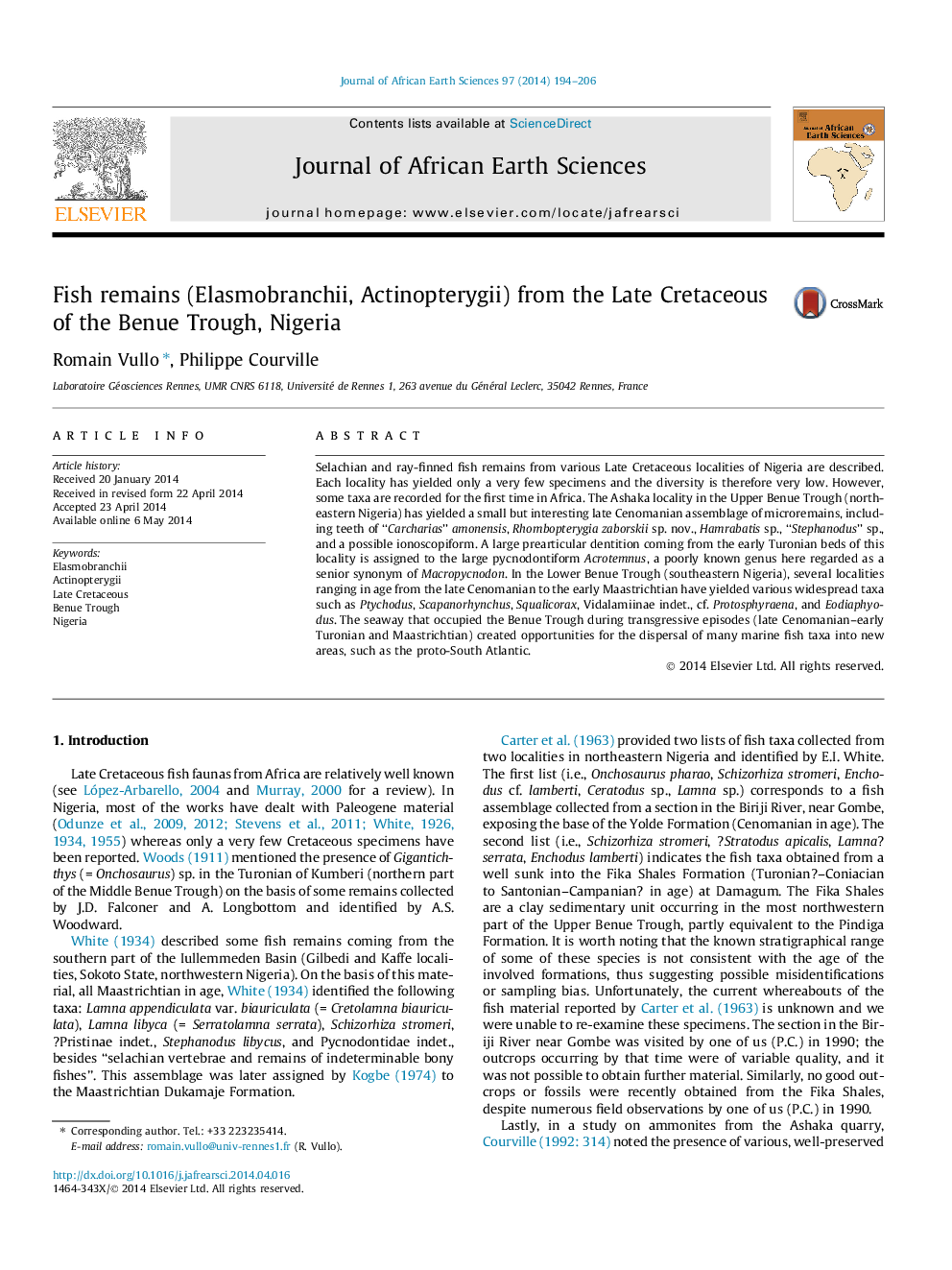| Article ID | Journal | Published Year | Pages | File Type |
|---|---|---|---|---|
| 4728781 | Journal of African Earth Sciences | 2014 | 13 Pages |
•Selachian and ray-finned fishes are described from the Late Cretaceous of Nigeria.•Some fish taxa are recorded for the first time in Africa.•Rhombopterygia zaborskii sp. nov. is described from the Cenomanian of Ashaka.•The Benue Trough created opportunities for the dispersal of many marine fishes.
Selachian and ray-finned fish remains from various Late Cretaceous localities of Nigeria are described. Each locality has yielded only a very few specimens and the diversity is therefore very low. However, some taxa are recorded for the first time in Africa. The Ashaka locality in the Upper Benue Trough (northeastern Nigeria) has yielded a small but interesting late Cenomanian assemblage of microremains, including teeth of “Carcharias” amonensis, Rhombopterygia zaborskii sp. nov., Hamrabatis sp., “Stephanodus” sp., and a possible ionoscopiform. A large prearticular dentition coming from the early Turonian beds of this locality is assigned to the large pycnodontiform Acrotemnus, a poorly known genus here regarded as a senior synonym of Macropycnodon. In the Lower Benue Trough (southeastern Nigeria), several localities ranging in age from the late Cenomanian to the early Maastrichtian have yielded various widespread taxa such as Ptychodus, Scapanorhynchus, Squalicorax, Vidalamiinae indet., cf. Protosphyraena, and Eodiaphyodus. The seaway that occupied the Benue Trough during transgressive episodes (late Cenomanian–early Turonian and Maastrichtian) created opportunities for the dispersal of many marine fish taxa into new areas, such as the proto-South Atlantic.
